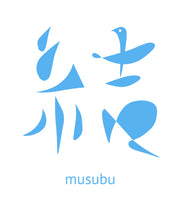gluten-free sweets, Sasa Dango

One day before the Children Day in Japan (5.May) this year, my daughter and I made Sasadango (bamboo sweet dumplings) with my friend, a speciality of Niigata Prefecture.
We found fresh bamboo leaves in an Asian shop in Berlin, and we also had Joshin flour (Rice flour), Shiratama flour (Glutinous rice flour) and Yomogi powder(Japanese mugwort powder), so we made them.

Sasadango and Chimaki (steamed glutinous rice wrapped in bamboo leaves and formed in triangle shape) are two of the most popular sweets eaten on the Children day in Niigata Prefecture. In other prefectures, Kashiwa-mochi (Mochi wrapped with young Ork leaf) may be more common, but in my hometown Niigata, Sasadango and Chimaki are often lined up in shops during this season.
Sasadango is a steamed dumpling made of yomogi rice cake filled with sweet red bean paste, wrapped in bamboo leaves like a big candy, and then tied around with a plants string like Igusa (soft rush) or Suge (sedges) .
When you peel off the bamboo leaves, a green dumpling with the faint scent of bamboo comes out, and when you bite into it, the texture is a little hard and there is red bean paste inside. The taste and smell is unforgettable for people in Niigata Prefecture. There used to be a private Sasadango shop in my neighbourhood that sold only handmade Sasadango, and when I walked past the shop, I could smell the delicious aroma of steaming Sasadango, which made me feel very happy.
It was the first time for me to make Sasadango even though I grew up in Niigata and I wasn't sure how it would turn out, but it turned out to be surprisingly easy, although it took a bit of time to roll the dumplings in the bamboo leaves. We couldn't get Igusa or sedge string, so we used a thin cotton string instead. We used Tsubu-an (sweet red bean paste), Koshi-an (pasted sweet red bean paste) and another kind of bean paste, walnut miso bean paste, which I've never seen in the Sasadango before, but it's also a common delicacy in Niigata. I used my homemade Miso. The result was a great success! The red bean paste was delicious, but the walnut miso bean paste was a big hit. It's sweet and nutty, so even those who don't like red bean paste can eat it.


By the way, when you eat the Sasadango, you shouldn't peel the bamboo leaves completely to the bottom. In Niigata, people peel off the bamboo leaves one by one from the top, just like peeling a banana, and bite into it. Then you can eat it cleanly without getting your hands dirty, and at the end of eating, if you tie the bamboo leaves together with the string from the wrapping, it will keep the mess together and make a neat finish.


The Niigata Chimaki is different from the typical Chinese or other Chimaki. It is made by steaming glutinous rice in a triangular folded bamboo leaves, tied with a string. The glutinous rice is not seasoned. The steamed glutinous rice is served with sweet soybean powder (Kinako). The combination of the soft triangular shape of the glutinous rice and the soybean powder gives the dumpling a very gentle taste.
Eating Sasadango in Berlin brought back memories of eating them as a child in faraway Niigata. This year's festive season, we were touched by the warm wisdom of the old people, who used natural bamboo leaves and igusa strings for rolling and steaming the dumplings, and by the joy of learning to make them with our hands.

